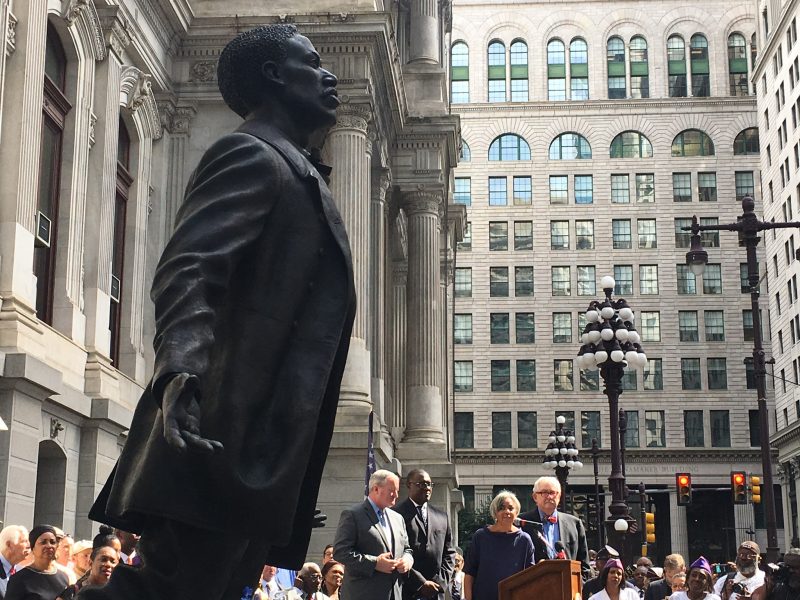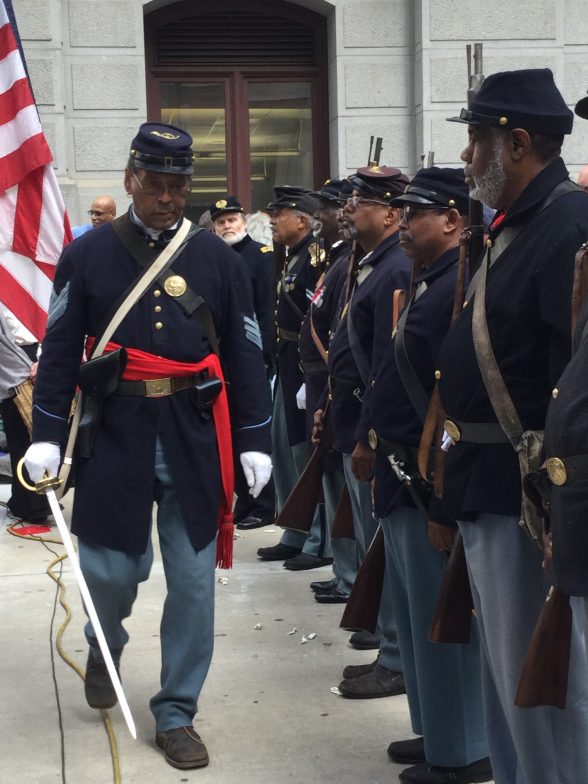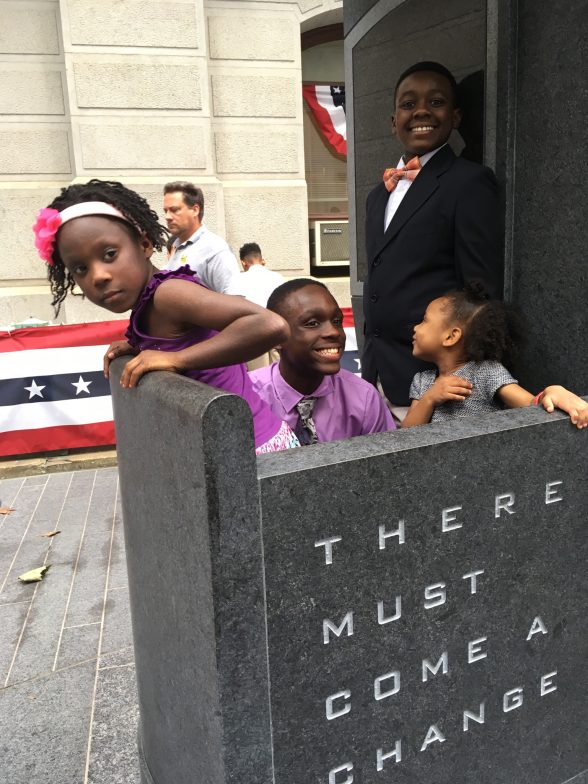
Artblog joined hundreds of Philadelphians at City Hall Tuesday for the long-anticipated unveiling of the memorial to 19th Century educator, athlete and Civil Rights leader, Octavius V. Catto, who was murdered for his activism when he was only 32 years old by those opposed to equal rights for African Americans. A Philadelphia hero, Catto’s many accomplishments have been under the radar until relatively recently. Mayor James Kenney learned about Catto in 2003, he said, and in 2006, he helped kick off a fundraising initiative for the memorial. Kenney expressed hope that the story of Catto would be taught in the schools so that everyone would know his story along with that of George Washington and Benjamin Franklin. The crowd cheered and clapped, many holding out their cellphones capturing every moment of every word spoken or sung.
The O.V. Catto Memorial Fund Committee raised $2M for the creation of the memorial. Committee Members Carol Clark Lawrence and James Straw spoke at the dedication of continuing their efforts, turning now to educating the public about Catto and his works.
Branley Cadet, the sculptor of the beautiful memorial, spoke briefly and movingly. He said he hoped that the memorial would “…herald a new era of understanding,…healing…and harmony among us all.”

The Black Civil War re-enactors shot their antique rifles, in three salvos, immediately before the veil was lifted. As soon as Lawrence spoke the words giving the memorial to the city and asking the city to “take care of him” people rushed to the base of the statue as if drawn like a magnet.
The O.V.Catto Memorial, called “A Quest for Parity: The Octavius V. Catto Memorial,” is as heartfelt and beautiful as the hero deserves. With the full figure of Catto striding forward, head high, arms outstretched as if to welcome and embrace all, the memorial is clearly for everybody. The educational components that dot the space in front of and behind the statue are symbols representing Catto’s work in desegregating the streetcars and empowering the vote for African American men. You might not “get” the symbolism until you study it for a minute. But this is a piece to spend time with. It unfolds in time.

The streetcar represents Catto’s work desegregating the Philadelphia streetcars in the post-Civil War era. Photo by Libby Rosof
This is a worthy memorial, and a perfect salve for a populace whiplashed by monument and anti-monument fever. This is the real thing, what good public art should be – made with the public in mind and made with the artist’s ability to stir the emotions and inspire, with beauty and grace.








